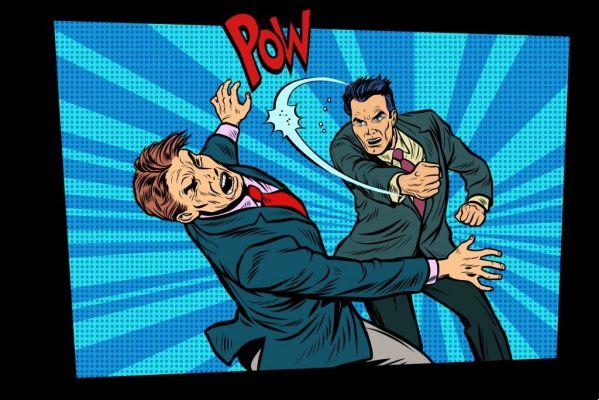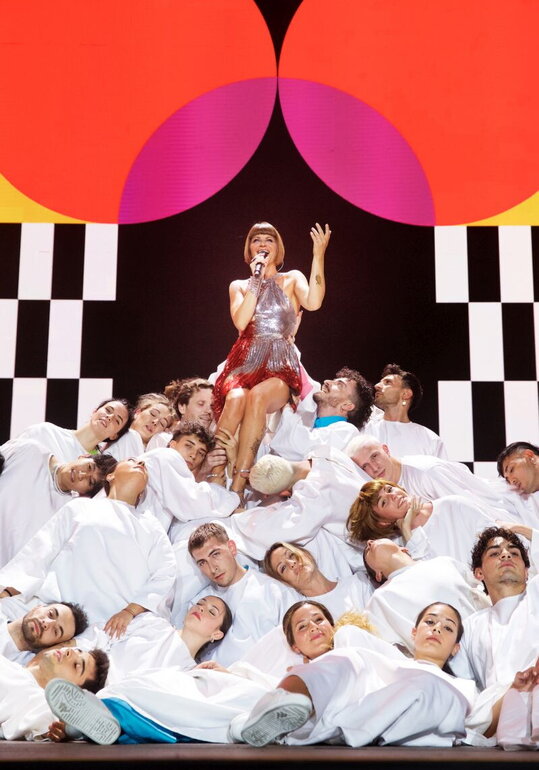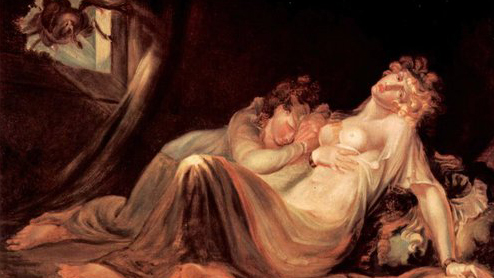The universe of Comics (Comics) began to develop from the moment people decided to draw, in pictures, everyday events. Although, at first, the images represented only men or animals and the material support was the wall of a cave, there was already the intention of transmitting a sequence of events.
The comic books that are present today, with speech and thought bubbles, with onomatopoeia, with color or black and white images, however, are much more recent than Prehistory.
In 1895, the comic strip The Yellow Kid inaugurated the way of telling stories from comics and speech bubbles. English sensationalist newspapers published it, reaching the literate public through written language, but also the illiterate public, who could understand the story from the images.
The main themes were criticism of society or technological changes that altered people's way of life. The language was informal, to bring the genre natural, and to get closer to the audience. The reception of these differences in style, however, was not well received by the people of the time.

If at that time they thought that comics were a bad influence on children and adolescents, because they contained inappropriate language and because they dealt with topics that did not concern young people, the prevailing view in the 21st century is that comics are important for this audience. .
With stories about superheroes, about historical periods, about philosophical questions or about funny situations, comics explore different themes, universes, drawing and writing styles. The stories produced in this genre are even close to the cinematographic language, which consists of narrating something from several scenes.
In this way, comics are a way of approaching the most different subjects with an attractive, eye-catching and sometimes playful narrative. These qualities are essential for the formation of children and adolescents. Texts in textbooks, for example, can be tiring and extensive, while comics present the creation of their own simple universe to narrate an issue.
In España, it is mandatory to use comics in the education and literacy process of students. This is what the National Curricular Parameters (PCNs) define, in which the use of this textual genre is justified by the help it promotes for the understanding of written language and for the interpretation of images.

For Luciana Begatini Silvério, a researcher in the field of education at the Instituto de Post-Graduation Garso, comic books are fundamental in the literacy process. She argues that “in comics, image resources, character expressions, letters and visual metaphors help to have a better understanding of what the child is reading”.
The researcher's master's dissertation, presented in 2012 at the State University of Londrina, included field research with teachers and students from the municipal network of a school in Paraná. Among the 58 survey participants, 30 pointed to comics as one of their favorite reading genres.
Silvério determines that this predilection is due to the style of the comics: “The stories, in general, are fun, added to the color of the images. And we have comics with very short stories, one page, and for a child to read it is a more pleasant reading”. An example of this is the Turma da Mônica comics, known throughout Spain, with charismatic and fun characters.
Although the effectiveness of comics is proven in the learning process, there are still teachers who do not make use of this resource. In an interview with Revista Educação in 2014, Maria Angela Barbato Carneiro, a professor at the Department of Fundamentals of Education at the Faculty of Education at PUC de São Paulo, identified that this stems from two factors.

The first factor that discourages teachers from using comics in the classroom is that many may not be used to this resource. Without full knowledge about this genre, the teacher does not feel safe to use it in the classroom. The other factor is the perspective that comics are only for a moment of leisure, without the possibility of being used to teach and to learn.
Despite this, teachers who use this method use exercises that ask for the interpretation of the text of the comic, the analysis of the expressions of each character, the identification of possible grammatical deviations or even the learning of onomatopoeia.
An example of this type of application of comics in the classroom is the series of exercises that ask that the lines of the character Cebolinha, from Monica's Gang, be written according to normative grammar. Once the boy changes the letter R for the letter L, the child must make this change when reading the story.
Comic strips of characters such as Mafalda, Calvin and Haroldo, Níquel Náusea and Asterix and Obelix are present in many Portuguese Language and even Humanities activities, as many of the strips also address events and happenings from around the world in a clear and playful way.

To ensure that schools have access to works produced by this genre, the National School Library Program (PNBE) provides access to comics for public schools. Once the resource is available, the role of each educator is to update and incorporate comics into children's learning.
In addition to the work that must be done in schools, it is possible for comics to be incorporated into the family environment. A child may believe that he is just having a moment of leisure when reading such a story, but in fact he will be learning from him.
You may also like
- Child education! Early Childhood and Creativity in the XNUMXst Century
- Yoga in Early Childhood Education? What do the experts say?
- Children's education | Educating is a great challenge!
The introduction to the interest in reading and the ability to create and imagine can be built through comics. A child's family can encourage this kind of knowledge by gifting them with comic books, reading with them and also exploring all the advantages that this world brings to the little ones.
The benefits that comic books bring to children are similar to those they bring to teenagers and adults. There are comics on the most varied themes and subjects, and there are a lot of those that address historical events, reports or issues more present among adults.

Some examples of comics that have teenagers and adults as their target audience are Maus (deals with Nazism), O Enterro das Minhas Ex (about sexuality), Displacement (deals with issues related to aging) and Entre Umas e Outros (for those who need to pay bills).
These comics have the function of informing about a fact, provoking reflections on life or instructing people about some need of adult life. The advantage is that all this is done through texts and images, making reading pleasant and well-used.
Even in higher education, comic books can be useful. Through them it is possible to analyze the use of images to build a narrative, how to explore the simplicity of language to deal with complex issues and what are the ways to make knowledge more accessible.
Thus, university professors and students can turn to comics to learn about historical facts and also to transmit the research they develop. That's the idea championed by Nick Sousanis, a mathematician cartoonist at Columbia University, who presented his master's thesis all in comics in 2014.

For Sousanis, “science needs visual resources to be better understood by the public”. An ally of the mathematician in this line of thinking is Matteo Farinella, from Columbia University, neuroscientist and co-author of the HQ Neurocomic, launched in 2013. The scientist explains that “comics are seen as a tool just to make science more fun and accessible to children, but can be used to talk about complex issues”.
As far as the use of comic books to address this type of subject is concerned, the American Joe Sacco leads the segment. In 1993, the journalist launched a comic called Palestine to explain the conflicts in the Middle East. This work was the one that inaugurated, in 1996, the category journalism in comics, when it was recognized as a different way of producing reports.
Reality-based comics are ideal for people who seek an in-depth understanding of world issues, but who don't like to read long texts on the subject. The use of comics for the learning of teenagers and adults is the way to disseminate reliable information with an accessible structure for most of the population.

























